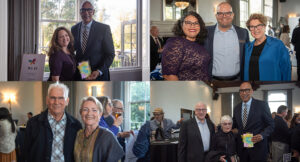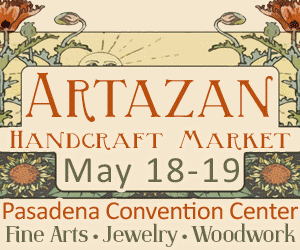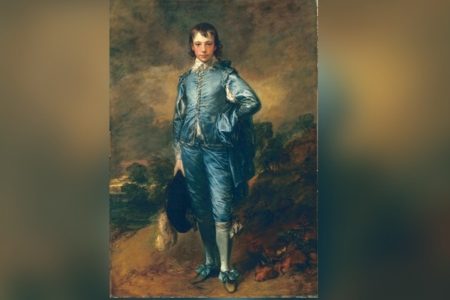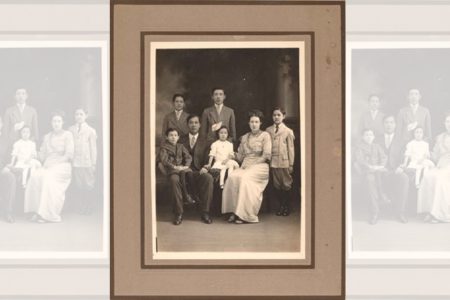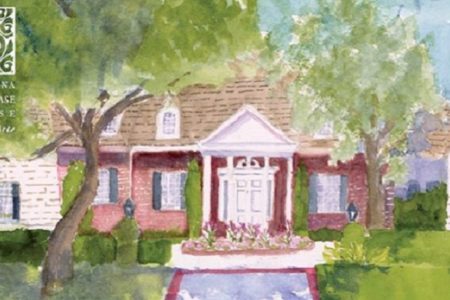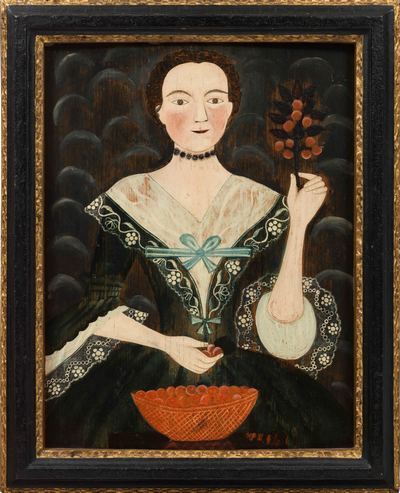
Artist unknown, Early Portrait of a Woman with a Bowl of Cherries, ca. 1770-1780, oil on panel. Photo by Fredrik Nilsen, courtesy of The Huntington Library, Art Collections and Botanical Gardens
Highlights of an important collection of early American art and furniture collection is accessible at Huntington.org for viewers to peruse at their leisure. They’re part of The Huntington Library, Art Museum and Botanical Gardens’ permanent exhibit, Becoming America, revealing utilitarian objects of beauty in everyday American life at a time when the population was slowly turning away from European art and traditions and forming a uniquely American vision.
The Jonathan and Karin Fielding Wing was opened to the public on Oct. 22, 2016, with more than 200 works from the Fielding Collection of 18th- and early-19th-century American works. The philanthropic couple was keenly interested in the history behind the acquisitions and how they were used in the household.
In a videotaped interview, Jonathan noted that the collection, spanning 1680 to 1850, sprang from a “flowering of American ingenuity.” The Fieldings were not interested in the small percentage of city dwellers at the time, but rather the other 90 percent who lived in rural areas–people doing farming and living the country life.
Some of these country folk pursued crafts as a sideline, eagerly anticipating extraordinary events like the opening of the Erie Canal in 1825, Jonathan said. The objects reflect “an uncommon ingenuity” in “simple people living a country life.”
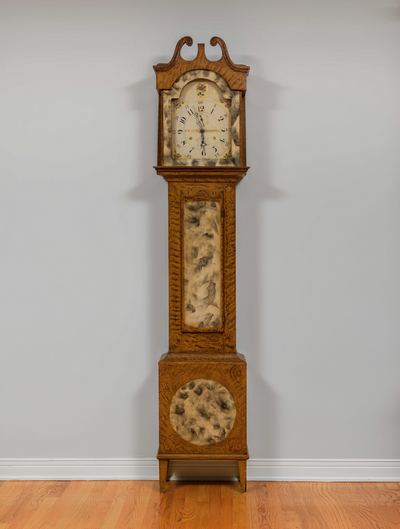
Riley Whiting, Federal Tall Case Clock, ca. 1820, pine, glass and paint, Photo by Fredrik Nilsen, courtesy of The Huntington Library, Art Collections and Botanical Gardens
Karin noted the existence of “a whole history of art that speaks to Americanism” and “our collective history of American art.”
What can you see? In a digital world where people are more likely to tell time by their cellphone than bya watch, some objects might be genuine curiosities for younger generations. Consider the Tall Case Clock (ca. 1820) made of glass and pine, painted to mimic expensive wood and marble.
One piece even had a moment of celebrity. The untitled portrait painted by Sheldon Peck was discovered during a 1997 Antiques Roadshow episode. Peck was not only an itinerant artist, but also an abolitionist who endorsed universal education. The unknown subject of the detailed painting was a dashing man with startling blue eyes and a resolute expression.
Of special interest to the growing ranks of sewing hobbyists spurred on by the pandemic is a needlework pocketbook (ca. 1776). The beautiful flame pattern still retains vibrant colors, but mistakes are still apparent (and you might take comfort in that). The young needleworker, Elizabeth Fellows, miscalculated and didn’t leave room for her full signature, but you can see the errant “s” below the rest of her surname.
Jonathan said his wish for viewers is “I would like them to be inspired,” and he hopes the exhibit will make people want “to dig deeper, to understand how they can be creative in their own way.”
While this show is available online, The Huntington began phased reopening for in-person visits with the gardens at the beginning of July. Non-members and members must make reservations online in advance. During fire season, The Huntington may be closed due to unhealthy air quality. Visitors can check huntington.org for ticket availability and details about current COVID-19 protocols.
